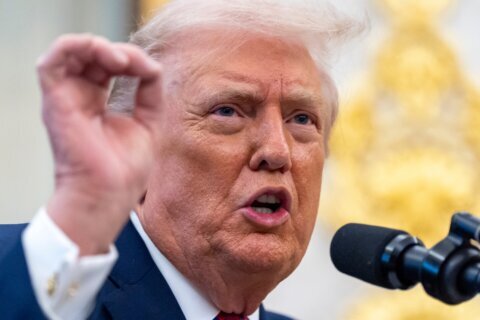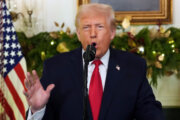Exchange-traded funds combine the convenience and ease of trading individual stocks while providing a simple way to diversify a portfolio by allowing investors to participate in an entire sector and avoid single stock risk.
The addition of these funds to a portfolio is a popular choice because investors can trade them at any point during the market day unlike mutual funds, which only trade after the market closes based on its net asset value.
Here are answers to a few common questions about these funds:
— What is an ETF?
— How to choose an ETF?
— What are some good ETF strategies?
— How to purchase ETFs?
What Is an ETF?
ETFs are baskets of securities like mutual funds, but these funds trade throughout the market day similar to stocks. These funds are popular because its a way to invest in stocks, bonds, commodities as well as track stock indices like the Russell 2000. These types of funds can also focus on emerging markets, stock sectors or specific industries, such as health care or energy.
Currently, there are more than 5,000 ETFs that trade globally, including about 1,750 based in the U.S, according to London-based research firm ETFGI.
These low-cost funds have better transparency and greater tax efficiency compared to mutual funds, says Deidre McClurg, president of Stoken Asset Management.
“When it comes to active traders, the biggest benefit of ETFs is flexibility because they allow you to trade (within the day),” she says.
The fees charged for an ETF from its expense ratio, are typically lower than actively managed mutual funds, especially ones that track an index or basket of assets passively.
Investors can put more dollars into an ETF, rather than into fees, says Rich Messina, senior vice president, investment product management at E-Trade Financial, a New York-based brokerage company.
[See: 10 Investing Tips for Busy People.]
“The everyday investor may not be able to invest in Alphabet (ticker: ( GOOG, GOOGL) or Amazon ( AMZN),” he says. “However, through a tech ETF, they are able to access these traditionally expensive stocks at a lower cost.”
How to Choose an ETF?
Diversifying a portfolio is important to lower risk and volatility. An investor should be aware of the exposure that each fund provides based on the sector, country or asset class level, says Andrew Thrasher, a portfolio manager for Financial Enhancement Group, an asset management firm in Indiana.
“Look below the surface of the fund to learn what type of risk exposure the ETF is providing,” he says. “Fortunately, most funds provide good transparency into what is being held.”
Funds that track a diversified index, such as the S&P 500, automatically provide diversification for the portfolio, McClurg says. As ETFs have gained popularity, most asset classes are now accessible through these funds.
“By adding exposure to more of these asset classes, one can increase portfolio diversification,” she says.
An investor should look at their portfolio holdings and examine where they may have gaps, such as including various domestic and international holdings and market caps.
ETF shares can be a great way to fill gaps in a portfolio, Messina says.
What Are Some Good ETF Investing Strategies?
A core satellite approach is one strategy; it combines active and passive investments into a single portfolio. The core of the investor’s portfolio consists of index-based ETFs, while the satellite is weighted on specific investment categories.
“This type of portfolio construction helps seek returns through satellite investments while the core investments help limit risk,” Messina says.
Experts say dollar-cost averaging is another strategy, which sets aside the same amount of money on a regular basis for investments. This strategy is a great entrance into portfolio management for younger investors, Messina says.
Dollar-cost-averaging provides a benefit when the market goes down because its allows investors to purchase some ETF shares at a lower price. They are also sidestepping the “massive risks associated with attempting to time the market, which very few investors are able to accomplish,” Thrasher says.
[Read: Patience Is Your Biggest Investment Asset.]
These funds allow investors to participate in an entire sector and avoid single stock risk, says Ron McCoy, CEO of Freedom Capital Advisors in Winter Garden, Florida.
“A good example would be iShares Nasdaq Biotechnology Index ( IBB) if you wanted exposure to biotechs, but sought to avoid getting clobbered because your single stock pick blew up on poor trial results for their lead candidate,” he says. “On the other hand, if your single stock company had great trial results, you could possibly stand to benefit more. ETFs by design require a little less attention than does a single stock pick.”
The flexibility offered by these types of funds can be advantageous for active traders, McClurg says. These traders often remember Oct. 19, 1987 when the S&P 500 dropped 20.5 percent in one day.
“Waiting until the end of the day to exit a market can be costly,” she says.
When investors are trading in more specialized ETFs, such as sector or industry-specific ones, timing is key, says C.J. Brott, founder of Capital Ideas, a registered investment advisor in Dallas.
“One of the circumstances making that fund a superior choice may be transitory or of a short-term nature,” he says. “Timing is an important part of the decision and dollar cost averaging would not be appropriate.”
How to Purchase ETFs?
Limit orders are when an investor states a preferred price for a fund; conversely, a market order is the price that an ETF sells for on the market.
A market or a limit order does not matter as much for investors who are planning to hold an ETF long term, experts say.
[Infographic: Investing Barriers Women Face.]
“In the short-term, limit orders can help you secure a security at the price you want,” Messina says. “By using a limit order, investors need to be patient. It could take some time before their threshold is hit.”
Overall, McClurg says ETFs have been a game changer for individual investors “because they have allowed investors to evolve their focus from stock selection to a wider spectrum of asset classes.”
More from U.S. News
8 Ways to Buy the S&P 500 With ETFs
8 Finely Focused Health ETFs to Buy
8 ETFs to Play a Robust Real Estate Market
Why You Should Include ETFs in Your Portfolio originally appeared on usnews.com






